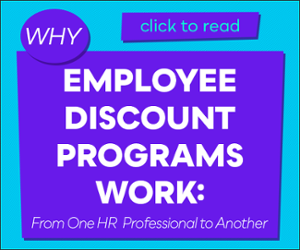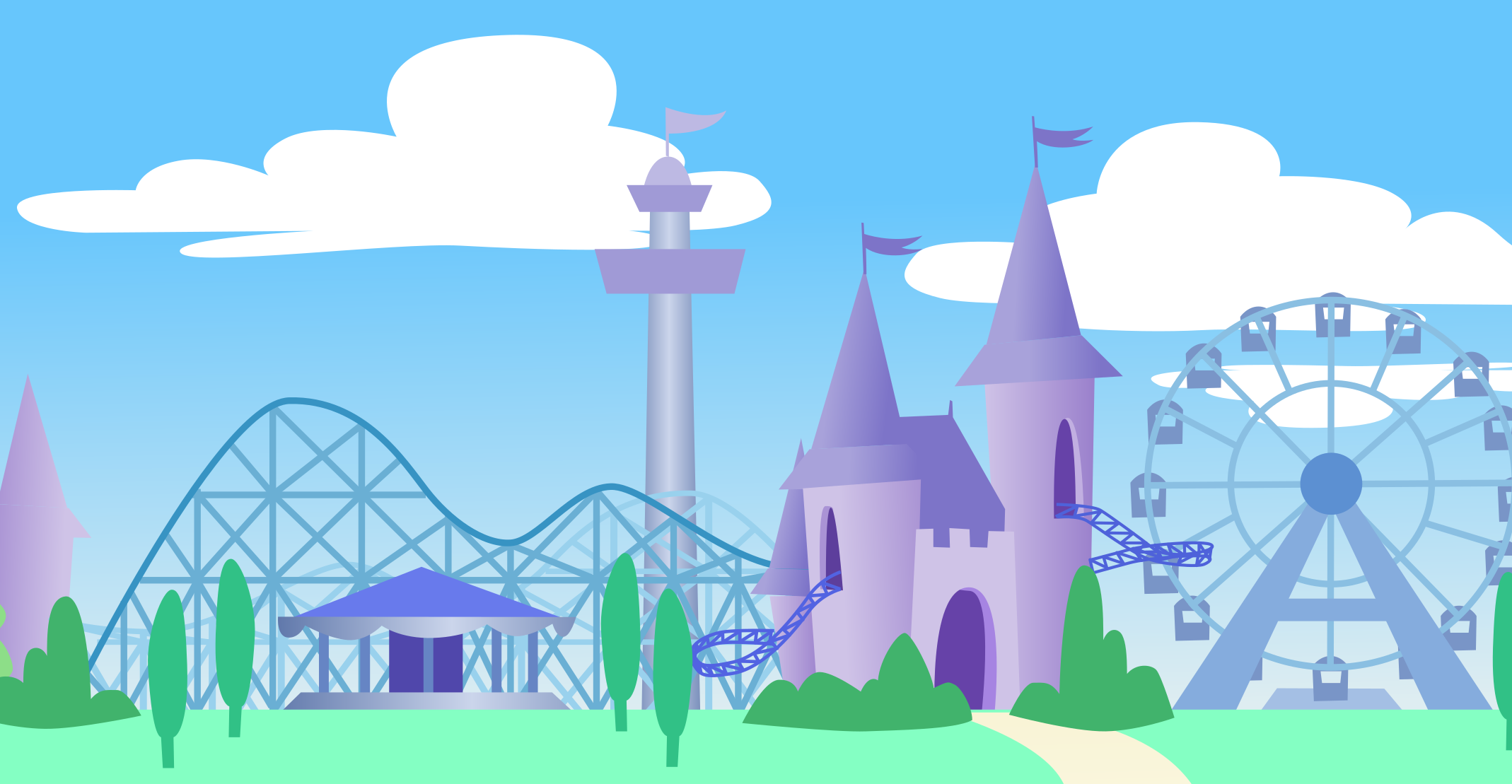The world is changing rapidly. With AI making its way into the workplace, many employees fear they will be left behind. This is bad news for businesses. Employee burnout is already rampant, and now job insecurity threatens to throw more fuel on the fire. What can HR professionals do? Do you know how to talk to your employees about coming changes?
About a 11-minute read
Artificial Intelligence (AI) is poised to transform every industry in every corner of our world. Companies are using it to create tools that feel like science fiction. They’re individualizing the customer experience to the nth degree. Me, I use it to print my picky four-year-old the perfect coloring page. “Here you go sweety, our family dog as a super hero vacuuming up a rainbow, just like you wanted.”
Since the launch of ChatGPT, AI has come out of the shadows and exploded into public perception. Speculation about AI is all over the place, especially when it comes to the job market. Some envision a world of wealth and leisure for all. Others envision an apocalyptic wasteland where robot overlords enslave the human race.
Most experts agree that we’re in the midst of a Fourth Industrial Revolution, and that AI has pushed it to an inflection point.
Just when you thought your employees couldn’t get any more stressed out, another fear enters the scene: The fear that AI will take over one’s job, maybe even one’s industry (making it impossible to continue in that field at all). It’s been brewing in the back of people’s minds for a while now. Maybe they discuss their worries in hushed whispers with colleagues around the water cooler. Maybe they sit and stew in their home office. Either way, if they haven’t already come out and asked their bosses and HR department the question, they probably will soon.
“Is AI coming for my job?”
A Quick, Oversimplified Explanation of AI
Artificial intelligence is the science of making machines think like humans do. Prior to the development of AI, machines could only perform tasks that they were directly programed to do. As the science of AI advances, machines are increasingly able to learn, reason and problem solve, even when presented with a new situation.
 Think of it this way: The first time you heard the word “book,” you had no idea what it meant. Then, after many times hearing the word and then being presented with books of all shapes and sizes, you learned. Today, I could hand you an object you’ve never seen before and you could accurately say whether that object is a book or not.
Think of it this way: The first time you heard the word “book,” you had no idea what it meant. Then, after many times hearing the word and then being presented with books of all shapes and sizes, you learned. Today, I could hand you an object you’ve never seen before and you could accurately say whether that object is a book or not.
Teaching machines to think in the same manner, called “machine learning” or “deep learning,” enables them to make logical conclusions, and find patterns in vast amounts of data. Businesses are using this to automate repetitive tasks in customer relationship management, sales, HR, supply chain management, accounting, programming, healthcare, and the list is growing.
The second AI innovation valuable to businesses is natural language processing. When computers are able to understand human conversation and respond in a human-like way, businesses can automate customer service, training, analyze customer reviews/feedback and more.
The more data we feed to AI, the more it can adapt and make appropriate conclusions in new situations. Right now, a staggering amount of data is shared daily throughout the world (and the amount is only growing).
A Quick, Oversimplified Explanation of Industrial Revolutions
AI is a disruptive technology, meaning it can’t help but significantly alter the way business is done. Disruptive technologies of the past set off industrial revolutions. In 1756, coal and steam power allowed for the mechanization of tasks. In 1870, gas and electric power allowed for the mass production of things. In 1969, electronics and computation power allowed for the automation of tasks.
Now, as we careen through the 4th industrial revolution, the landscape is being once again changed. This time, it’s powered by the softwaritization of everything; by the vast internet-of-things; and by emerging technologies like robotics, 3D printing, autonomous vehicles, nanotechnology, quantum computing and, of course, artificial intelligence.
Together, these advances represent a merging of the physical world with the digital world. AI is only a piece, but it is being hailed as the defining driver of change, the thing that will take us from linear growth to exponential growth.
Conclusion: Big Change is Coming to the Workplace
To be more precise, change is already here, but there is much, much more to come.
Economists predict the AI revolution will follow the same trends as past industrial revolutions. AI experts are attempting to map a timeline for when new technologies will mature and become widely used. Based on these predictions, what can we safely assume is coming over the next few years and decades?
- Society will be lifted to new heights and improve living conditions for all, as happened in each previous industrial revolution.
- Some jobs will become obsolete, but eventually, even more new jobs will be created.
- AI will effectively complete routine and repetitive tasks, freeing people to be more creative and social.
All this leads us to believe that, on the whole, the world will be better off in the long run because of AI.
BUT
(And this is a big but…)
Most employees aren’t thinking about the health of the world economy. They’re wondering how they’ll afford to eat if they get laid off tomorrow. They’re calculating how long it will take to learn a new skill that will make them employable again. They’re mourning because astronomical student loans and years of effort bought them a degree that may soon be useless.
Big Change = Big Anxiety in the Workplace
The vast majority of U.S. workers are worried that AI will negatively impact their job. As exposure to AI grows, people are becoming more anxious, not less. In fact, 48% are more concerned now than they were a year ago.
It doesn’t help that tech giants like Elon Musk and Bill Gates publicly warn of the dangers of AI with inflammatory headlines like “AI will take all our jobs” and “I could even lose my job.”
What do your employees fear? 75% of workers worry that AI will make certain jobs obsolete, 72% worry AI will limit their pay and career growth, and 67% fear they will miss out on promotions or fall behind if they aren’t trained on AI technology.
 Who is most worried of all? One study showed that older generations are more pessimistic about how AI will affect their jobs than younger generations. Lower income workers are more pessimistic than higher income earners. Women trend less optimistic than men. Fully remote workers are more pessimistic than hybrid workers and gig workers.
Who is most worried of all? One study showed that older generations are more pessimistic about how AI will affect their jobs than younger generations. Lower income workers are more pessimistic than higher income earners. Women trend less optimistic than men. Fully remote workers are more pessimistic than hybrid workers and gig workers.
For people who are already stressed (and there are a LOT of them out there right now) the idea of facing major change could feel like more than they can take. Disruptive change is a major factor in causing employees to disengage from work and workplace culture, burn out and/or look for another employer altogether. Management, executives and yes, even HR professionals are not exempt, and are shown to be even more impacted by disruptive change.
How to Ease AI Anxiety in your Workplace
With the stress of AI anxiety already flooding the workplace, employers that do nothing to guide their employees through this disruptive change are sure to experience the negative effects.
The good news is that human resources professionals are already in the position to make a profound impact when it comes to alleviating employee stress and burnout. That’s because the most effective strategies fall under HR’s purview. Ironically, AI tools for human resources are already available to help boost overall HR efficiency, which frees up some time to focus on the important tasks of building employee confidence and engagement (which require a human touch).
Highly engaged employees are much more resilient to change than disengaged employees.
You’ll want to be prepared when employees start asking about AI. Better yet, you can address employee concerns before they feel compelled to ask. Here’s how:
Communicate a Clear, Confident Plan + Timeline
“In the absence of data, we will always make up stories.” – Brene Brown.
This quote illustrates how people tend to fill in the gaps, and most of the time it’s with worst-case scenarios. When applied to AI, under-informed worst-case scenarios can cause existential dread, feelings of powerlessness, and of course, fear of losing one’s job to AI.
For all the problems that emanate from the fear of the unknown, the cure is almost laughably simple: data.
So, what data will best help employees overcome their anxiety in the workplace?
The answer is to begin with the information that impacts them personally. With a topic as large and complex as AI, it’s best to save the nitty-gritty details and step-by-step how-tos for later. From the very beginning, though, every employee will benefit from knowing the high-level vision:
-
- What your business hopes to gain from implementing AI
- What training and resources will be provided
- What metrics will you use to determine success
- When changes will begin and when the company expects to reach “success”
- How each employee’s role fits into the bigger picture
Clarity will be your best friend, especially during the early transitionary period where you’re introducing and integrating AI into the workplace. When you say employees will now be working alongside AI, you might mean they’ll have new software installed on their work computers. Meanwhile, they’re imagining their office BFF being replaced by C3PO.
Shining a light into the future will help minimize anxiety, encourage innovation and ensure you implementation period goes smoothly.
Reskill and Upskill Your Employees ASAP
All businesses across the world are facing the same challenge at the same time: one billion jobs (a third of ALL jobs) are set to be transformed by technology in a single decade. That means one billion workers will soon need skills that few/none currently possess.
And yet, some employees look at AI and all they can see is an overwhelming skills gap between where they are and where they need to be to stay employable. The longer they hesitate, the bigger this gap grows. Even those who don’t hesitate to jump right in are learning slower than the technology’s ability to advance. If anything, business leaders and AI experts are even more worried about the skills gap, going so far as to call it a reskilling emergency.
Everyone needs AI-savvy employees at a time when there aren’t enough to go around. The best (and often only) option is to teach emerging skills to your current employees.
In other words, not reskilling is not an option.
 Most Americans indicate they will welcome the training. In fact, in one study, employees were practically begging for more training AND communication AND transparency. Despite this, 63% of employees said the lack of AI skilling opportunities added to their anxiety.
Most Americans indicate they will welcome the training. In fact, in one study, employees were practically begging for more training AND communication AND transparency. Despite this, 63% of employees said the lack of AI skilling opportunities added to their anxiety.
Where do businesses start? Jumping straight to training on an individual’s new processes and technology might not be the best idea. Much more than any other technology, AI has an air of mystery and unknowability. Most employees would benefit from a crash course AI literacy before they’re ready to learn the specifics of how it will be used in their jobs. For that reason, some businesses have found success empowering learning and development (L&D) professionals to create tailored learning paths and hands-on experience to make AI accessible to every employee.
Consider it an investment in your people. After all, AI technology is a huge investment, predicted to reach $200 billion globally by 2025. Artificial intelligence and human intelligence are both needed in order to see a return on your investment. Or, as Johnny C. Taylor, President of SHRM recently said, “AI+HI=ROI.”
Set Realistic Employee Expectations During Transition
Few things are more stressful to employees than unrealistic deadlines, workloads and/or results. AI automation is supposed to take away much of that workload, allowing them to be more productive with less work and less stress… eventually. However, standing between employees and that sunny future is more learning, more work, and therefore, more stress.
Company leaders will need to manage the expectations they place on AI technology and on their employees, especially during the training and implementation period.
First of all, many leaders have high expectations about the commercial uses of AI. However, AI is an evolving, and often untested, technology. Right now, businesses are pouring billions of dollars into AI solutions on the promise of increased efficiency. Some are now reporting that those promises were exaggerated, that it’s just not right for their industry, or that their AI project just plain failed, as up to 80% of them do.
Unfortunately, these high expectations for fast results are often pushed onto employees with little regard for the time needed to master the skill. According to one study, the average employee will require an estimated 101 days of learning to prepare for the introduction of AI. That means between the large upfront cost and long training needs, most businesses won’t see their investment return for an average of 17 months. When leaders keep the facts in mind and set realistic expectations, employees can explore without pressure and return better results.
Ask yourself, when you introduce a new automation solution:
-
- Will you expect employees to complete all their regular duties while also taking on the large task of learning a new skill?
- Are you holding your employees to the exact same criteria for success as before?
- Are you putting pressure (spoken or unspoken) on employees to justify the price tag of AI solutions?
- Are you putting pressure on employees to “make it work” even if the solution is underdelivering on promises?
If so, you’re likely putting excess stress on a workforce that is already susceptible to employee burnout. Worse still, they probably feel a strong sense of unfairness, which quickly eats away at morale.
Many companies have found success by starting small—perhaps with a pilot program—and then scaling up in phases as the technology proves effective.
Show Energy and Excitement for Change
People too often focus on the negatives of AI. To be fair, AI brings with it possibilities of plagiarism, deep fakes, malicious hackers, myriad unintended consequences of adopting AI too quickly... the list goes on and on. In the workplace, feelings of pessimism, reluctance and skepticism (which often are the result of fear) are the enemy of progress.
Fortunately, leaders have the power to calm or enflame their employees’ anxieties, all through the energy they bring to the conversation. For example, when leaders show excitement for the future, you’ll help employees reframe AI in their minds to focus on the many benefits that AI can bring into the workplace.
 Fortunately, the benefits of AI become easier to prove as automation grows more ubiquitous. One study found that 2 out of 3 workers who are using automation say it has made their job less tedious or less dangerous. Even better, automating repetitive tasks leaves more time for creativity and innovation. Employees empowered to use these skills generally feel a greater sense of purpose and meaningfulness in their work, which in turn leads to higher employee engagement.
Fortunately, the benefits of AI become easier to prove as automation grows more ubiquitous. One study found that 2 out of 3 workers who are using automation say it has made their job less tedious or less dangerous. Even better, automating repetitive tasks leaves more time for creativity and innovation. Employees empowered to use these skills generally feel a greater sense of purpose and meaningfulness in their work, which in turn leads to higher employee engagement.
How can you make automation, innovation and curiosity part of your company culture? Doing so could help employees feel more comfortable turning over tasks to virtual assistants.
Some businesses have found success assigning the role of “automation champion.” These champions are assigned to watch over their team and help their colleagues come to terms with and embrace the changes that automation brings. Another valuable function they can perform is to report back to decision makers things like: how new processes are working, improvements that can be made and bottlenecks that could be solved with future automation.
Other companies have made work a safe space to take risks. When employees have the freedom to experiment with AI in order to find new business solutions, groundbreaking ideas can emerge. Of course, some experiments will end in epic failures, but that doesn’t make it a waste of time. Either way, you can celebrate the successes and learn from the failures. As long as everyone has a clear vision of the organization’s goals, both outcomes will keep the company moving toward.
Train, Hire and Promote for HUMAN Skills
AI is able to learn many workplace “hard skills” at incredible speed. “Soft skills,” on the other hand, cannot be automated, meaning only human workers will be able to bring them to the workplace.
What’s the difference?
Hard skills are technical skills learned through education and hands-on experience like programming languages, budgeting, proofreading, etc. Soft skills are personal or people skills that are typically developed throughout one’s life. These skills are harder to define, but they are crucial for accomplishing goals and getting along with other people.
Employees have always needed to bring a mix of both types to the table. Up to now, employers heavily emphasize hard skills when posting job listings, evaluating resumes and determining compensation. However, in a future where AI has automated most routine tasks, employees who have mastered the soft skills will be in the most demand.
That’s because interpersonal soft skills like emotional intelligence, compassion, ability to inspire others, teamwork, leadership, adaptability, etc. help an employee function harmoniously in a workplace setting. Also, personal soft skills like time management, strategic vision, problem-solving and critical thinking prepare them to make the most of their AI tools so that together, they can maximize each other’s potential.
Which soft skills will be the most important of all in an AI future? In one study, 78% of business leaders named strong moral character/integrity as the most needed trait in AI integrated workplaces. Integrity is even more important to cultivate in managers, leaders and anyone else who sets the example for proper use of AI. When asked what would make employees more comfortable using AI tools at work, 81% of employees said they want best practices on responsible AI use to be routinely shared, and 77% want senior leaders to promote the responsible/ethical use of AI.
Not far behind in importance is the growing need for face-to-face, oral communication skills according to 72% of AI users. Genuine connections are difficult to develop. AI written communication, even though it feels increasingly human, is an extra layer of separation we can’t afford, especially when it comes to sensitive issues.
Practice Empathy and Equity
HR professionals and other leaders will need to use all their soft skills to lead employees equitably into the future. Equity (as opposed to equality) is about giving every employee the same chance to succeed, even if that means some get more help and resources than others. Listening with an empathetic ear is the best way to learn the real, individual reason behind the fear.
The fact is, many of your employee’s worst fears and anxieties are actually warranted. Even when they aren’t, their feelings are real, and are really affecting their ability to adapt to changes.
We can look to statistics and trends for general guidelines, but employee fears will be as diverse and unique as the people are. Their fears could be based on:
-
- Personal finances: Unemployment anxiety runs high at a time when even middle-class folks don’t have the savings to weather any length of unemployment.
- Personality: Some employees thrive under repetitive, routine tasks. Some types of neurodivergence make interpersonal skills particularly difficult to master. Some employees lack the confidence that they can learn more specialized skills. Some employees are naturally more distrustful of technology than others.
- Stress levels: Employees who are already stressed are more likely to react to new situations with fear. Right now, employee burnout rates are soaring. Workplaces that are overrun with unnecessary stressors like toxic behaviors, unreasonable workloads, inequalities, etc. might find their employees ill-equipped to handle the added stress of AI implementation.
- Luck of the draw: While past industrial revolutions have impacted mostly unskilled laborers, the AI revolution will also take a heavy toll on educated and highly-skilled knowledge workers. Everyone needs to adapt, but some face a more daunting challenge than others.
Employees may be saying, “is AI coming for my job?” but what they might actually mean: “how do you expect me to fit this on my already over-flowing plate?” or “are you sure this is safe?” or “but I like crunching numbers; it’s the only thing I’ve ever been good at.”
Once you know, you can conquer that fear together.
Acknowledge Things May Change… And Then Change Again
AI is evolving fast and permeating more and more areas of daily life. Even the world’s leading experts disagree about what the future holds.
-
 Federal and state governments are scrambling to create legislation to protect privacy, define ownership, eliminate biases, and define the ethics of AI use.
Federal and state governments are scrambling to create legislation to protect privacy, define ownership, eliminate biases, and define the ethics of AI use.- Many AI tools are free to use right now because every interaction finetunes the tool to become more accurate and diverse. Once the massive test run is complete and developers have worked out most of the bugs, chances are these programs will be available with paid subscriptions only.
- The U.S. education system has yet to find a balance—is student use of AI cheating and preventing the development of critical thinking? Or, is educator refusal to teach AI as a tool sending graduates into the world unprepared for modern workplaces?
- Technology policies surrounding data governance, cybersecurity and algorithm biases are struggling to adapt as quickly as the technology itself.
The road forward won’t be straightforward. In fact, many say it will be downright messy. Employers have little control over these factors. Therefore, it’s even more important to address employee anxiety with transparency and continuous communication.
Engaged Employees are Change-Ready Employees
We can listen to experts; we can make our best guesses; we can ask ChatGPT if it knows what the future holds…
The only thing we know for sure is that change is coming. Change of any kind can be a major stressor for employees whose batteries are already running dangerously low.
Therefore, one of the best strategies for guiding your workforce into the future is by focusing every day on employee wellness and employee engagement.
Even in a future where AI and other technology take over the brunt of repetitive labor, a company’s biggest asset will still be its human employees. Innovation, creativity, empathy, leadership… the heart of a business relies on qualities that are uniquely and exclusively (singularity is still theoretical after all) human. Therefore, investing in your human workforce is just as important as investing in the latest tech.
Companies that put in the work to develop a positive and empathetic company culture reap all kinds of rewards in the long run.
Tell us, what is the most urgent AI anxiety you’ve addressed in your workplace? Have you implemented any AI tools? How are your employees adapting to the changes? Comment below!










